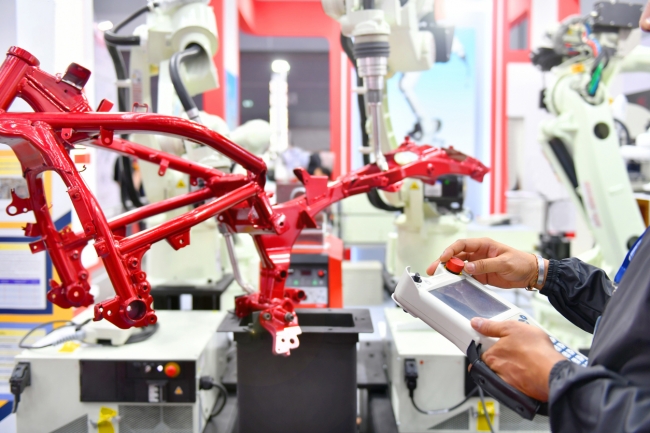3 minute read • published in partnership with BDO
Insight: 7 keys to winning at digital transformation in manufacturing
Innovation has always been at the heart of successful manufacturing and this is as true today as it has ever been. Being in the middle of the Industry 4.0 transformation, we continue to see that it is those businesses embracing and delivering successful digital transformation projects that are positioning themselves best for the future. Ross LeCarpentier from BDO shares his thoughts on successful digital transformation in manufacturing.
The majority of businesses I work with are clearly aware of Industry 4.0 and see the benefits that digital transformation can bring. At the same time, many of these businesses are nervous about embarking on such a change programme because the risks are too great and could compromise existing operations or be an expensive investment for little return.
Digital adoption, however, is too significant to ignore. It is essential that all businesses act on the opportunities it offers or they risk being left behind those that do embrace and implement new digital ways of working. So how do we de-risk the delivery of digital transformation projects and make it easier to understand the opportunity and deliver the benefit?
With more than 20 years of experience in helping businesses embrace and deliver effective technology-enabled change, there are a number of key ‘get-rights’ which I believe should underpin every digital transformation project. Unfortunately, far too often these are bypassed or ignored by businesses.

It is essential that businesses act on the opportunities digital transformation offers or they risk being left behind / Picture: Getty/iStock
The seven keys to winning are:
1 – Don’t focus solely on technology
It may seem counterintuitive, but technology is not the first thing you should focus on in a digitalisation programme. Technology and digital solutions provide ideas and opportunities to exploit only if they resolve a genuine issue for your organisation. Digitalisation should always be a means to an end, not the end in itself. Failing to apply this principle could impair your chances of success.
2 – Understand the opportunity
It is natural to worry about introducing leading-edge technologies with an unproven track record. But that’s no longer what most digitalisation is about. Many digital tools you could benefit from, such as artificial intelligence, robotics and automation, 3D printing or the Internet of Things, are ones that are already being used widely. The risk is in not understanding them and not using them.
3 – Identify areas for improvement
The first practical step in any digitalisation programme should be to focus on improvement opportunities within your business. Maybe you could benefit from reducing working capital, increasing productivity, collaborating across your supply chain or helping ensure new product development is focused on what your customers need. Identify the needs that digital tools can solve.
4 – Consider your corporate culture
It sounds obvious, but one of the greatest barriers to any project is not usually the tools involved, but the people. So carefully consider your corporate culture, and your track record of innovating, embracing change and delivering successful transformation, before deciding how wide and deep you should go with digitalisation.
5 – You don’t have to go big
Regardless of your company’s appetite for innovation, it makes sense for early digitalisation efforts to focus on low-hanging fruit. Pick areas where you can introduce digital tools quickly and easily, and gain clear, rapid results which build confidence and buy-in.
6 – Know the value of data
Even the best digital tools cannot work well without good data. So, when it comes to scoping your digitalisation project, carefully consider what sources of data you have available, the quality of that data, and how easy it is to use and maintain.
7 – Get leadership buy in
Any digital change must be clearly articulated in business terms and led from the top. It is not enough just to have a senior champion in name alone. Leadership must be fully committed to the cause. This is always easier if you have identified a clear business issue to be solved and have top-down agreement and buy-in.

BDO Director, Ross LeCarpentier / Picture: BDO
Follow these steps and it will become evident that Industry 4.0 is not all about wholesale change or radical transformation. It’s about challenging yourself in terms of what you do, what your customers need and thinking about what you can do to keep improving.
Visit BDO’s Manufacturing Digital Transformation hub for its latest insights.
